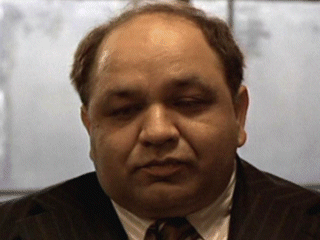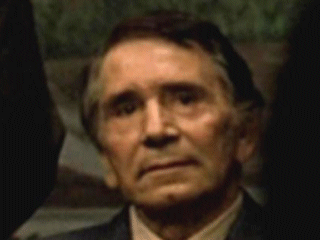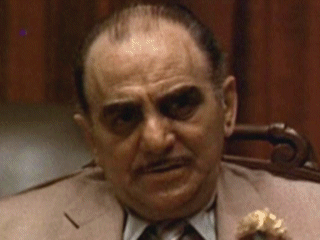
Symbolisms in Godfather I and II
There is an observation I made, this time regarding Godfather I and Godfather II. It is about the difference in depiction between specific characters in The Godfather and others in Godfather Part 2; specifically the bad guys.
I will start with the first movie: In GF1 there were the caporegimes Sal Tessio and Peter Clemenza, hit men Luca Brasi and Willi Cicci, and adversaries Virgil Solozzo, Phillip and Bruno Tattaglia, Emilio Barzini, as well as Stracci, Cuneo, among others. In GF2, the Corleone caporegimes were Rocco Lampone and Al Neri. Hyman Roth was an ally turned adversary to the Corleones. Willie Cicci at that point was a capo to Frank Pentangili who had replaced Clemenza, but I will get to them later. The characters I named from GF1 all had very pronounced, dramatic features and stood out in their appearance in an almost theatrically stereotypical manner.
When I first mentioned this to a friend in a discussion we had a while back about my observation, he ventured in, assuming the point I was leading to, suggesting, “While Michael looked very pure and innocent?” I stopped to consider that. His suggestion was along the lines of what my point of observation was to be, but it was not what my initial observation had been. What I was getting at was that while the caporegimes, the hitmen, and the enemies of the Corleone family had prominent, even somewhat ominous features in GF1…
ggg
Capo Peter Clemenza
Capo Sal Tessio
Hitman Luca Brazi
Virgil Sollozo
…the capos and hitmen of the Corleones in GF2; Rocco Lampone, Al Neri, and ally turned disguised enemy Hyman Roth, were much more average and simpler in appearance; that while the top players in GF1 stood out and visually commanded attention, the top players in GF2 were far more likely to blend into the crowd, a big departure from the characters in the first film.
Al Neri
Rocco Lampone, blending into a crowd.
Hyman Roth
Now it is true that both Al Neri and Rocco Lampone were introduced in GF1, and that they were capos by the end of that film, but it wasn’t until GF2 that their roles and their closeness to Michael were really seen, the same as how Clemenza and Tessio were seen in interaction with Vito Corleone, in GF1. In GF2, Willie Cicci served as capo to Frank Pentangeli who had succeeded Pete Clemenza as head of the NY Corleone operation, the territory Michael had left behind when he moved to Nevada. Now to my observation, my perception of the symbolism implied there. GF1 gave us characters with dominant, dramatic, even “gangsterish” features. This extended and stopped in GF2 with Cicci and Pentangeli. GF2 gave us characters with simpler, more average looking features. This began and continued from GF1 with Neri and Lampone. So what is the symbolism here, what were we meant to perceive from the transition of character appearances from one movie to the next? Although the first Godfather was set in the 1940s, and the second film in 1959, the obvious and expected changes in appearances and dress codes from one decade to the next are not what I’m getting at. I know what my viewpoint is, but what is yours? What is the symbolism we are seeing there? Hmmmm?
A deep-thinking friend on another message board, who at the time is not on Facebook, responded with these thoughts:
“I'd say, and I think you got at this yourself, that the differences are a reflection of the man at the top. I've noted, in the past, that Brando's Don Corleone was much more "dramatic". That everyone always focused on, and loved to mimic, what I'll call "The Voice". In contrast, Pacino's very understated Don Corleone often seems to be glossed over, forgotten in Brando's shadow. It seems fitting and maybe appropriate that the members of Vito's organization were also more "dramatic", as you noted, and that Michael's people seemed unassuming, like him. Michael's was a much quieter evil (if we want to use that label). The personalities of the Dons seemed reflected in their respective organizations.”
To which I had replied:
Your reasoning for Michael’s regime not being as dramatic as Vito's makes sense. It also reminded me of something that was expressed between Tom and Frank Pentangili at the end of GF2, as implied by Tom, that the Corleone family was not as honorable as it once was, that times had changed. This was after the trial sequence, when Tom subtly suggested that Frank take his own life, and his family would be taken care of by the Corleones, and Frank said that the Corleone family was like the Roman Empire.
And finally in closing here is a random shot of Apollonio because, why not, she's sweet Apollonia!
---------------------------------------------------------------------------------------------------
I will conclude this Note about symbolism in appearances with some random trivia I picked up on IMDb about the Godfather films and certain symbolism. I quote…
The presence of oranges in the Godfather trilogy indicates that a death-related event will soon occur (even though production designer Dean Tavoularis claimed the oranges were simply used to brighten up the darkly shot film). In chronological order of such events:
-
Hagen and Woltz negotiate Johnny Fontane's position at a table with a bowl of oranges on it, and later Woltz discovers his horse's severed head
-
Don Corleone buys oranges right before he is shot
-
Sonny drives past an advertisement for Florida Oranges before he is assassinated
-
at the Mafioso summit, bowls of oranges are placed on the tables (specifically in front of those Dons who will be assassinated)
-
Michael eats an orange while discussing his plans with Hagen
-
before Don Corleone dies, he puts an orange peel in his mouth to playfully scare his grandson
-
Tessio, who is executed for attempting to betray Michael, plays with an orange at Connie's wedding
-
and Carlo Rizzi, who wears an orange suit right before Sonny beats him up, causes Sonny's death and is himself garrotted in retribution.
-
The only deaths in the film that don't appear to have oranges foreshadowing them are the assassinations of Paulie, Sollozzo, McCluskey and Apollonia.
I wonder about Apollonia’s death. Close observation may reveal the presence of an orange or oranges in the garden near that location, or in Calo’s room when Michael asked him where Apollonia was, perhaps on the table near his wine and cheese? I noticed another example of this, during Part III. It is in the scene where Michael tearfully confesses his sins to a priest and blurts out his admission of having had his brother Fredo killed, of having killed his mother and father's son. Immediately after he has a diabetic attack and orange juice is rushed over to him. In the quoted examples, oranges were present prior to a death or deaths. In my example, orange juice, the after-effect of oranges, is present while past deaths are discussed. Also in III, when Don Altabello (sp?) sits with the assassin and enlists his skills, there are vegetables on the table. I may be wrong, but I'd wager there were oranges there too.














